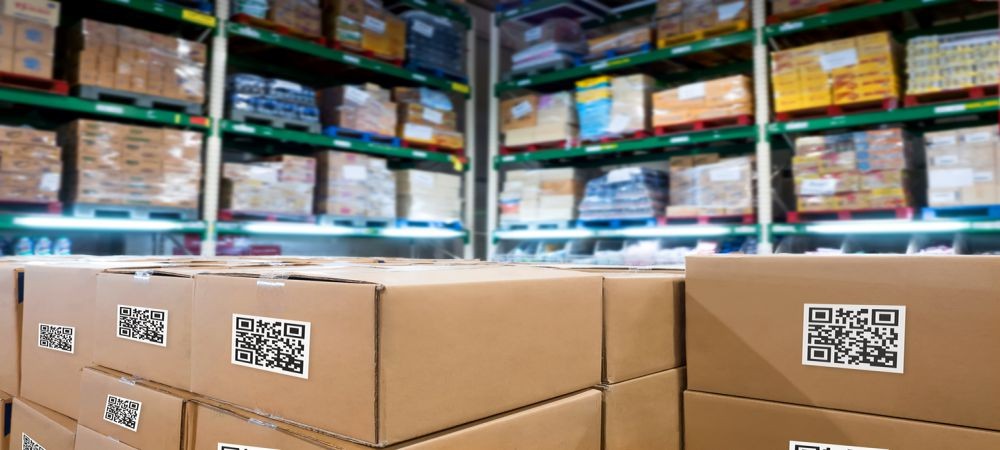Everything You Need to Know About Warehousing Solutions
Warehousing is one of the essential cores of every business supply chain. Before, this term is often neglected and overlooked by many business owners.
Little did they know, warehousing solutions and even inventory storage have a significant effect on every business. It influences everything from efficiently managing inventory, packing items, and delivering orders efficiently and effectively.
Though the basic foundation of warehousing has not changed much over the decades, it has evolved a lot and will continue to do so in the coming years. With the aid of new technologies and the ever-growing online e-commerce and digital world, it is possible to evolve. Besides, its demand continues rising while the supply of warehouse space is decreasing due to shortage.
What is Warehousing?
Warehousing refers to the storing facility of physical goods before they are delivered and sold. These storage solutions are designed securely and safely to store products and goods in an organized and efficient way. With the right warehouse software, you can easily handle your e-commerce business from inventory management, item packaging, and item delivery.
Those business owners who are only starting or having a small business operation use their home or home office as their warehouse.
However, some business owners are obliged to use storage units as their warehousing solutions to store products. At some point, they need to lease a warehouse, rent storage space, or outsource logistics to a third-party and keep their inventory in the facility.
Main Components of Warehousing Logistics
If your business is selling physical goods, you should consider warehousing logistics as it is the key to your success. Most warehouses include essential elements such as management, warehousing operations, and warehouse management systems.
1. Warehouse management
Warehouse management refers to the day-to-day running of business operations in a warehouse to build, improve, and ensure business operational excellence. Managing means handling all staff, training, product inventory, equipment, safety, and security, even building shipping carriers relationships and other moving pieces.
2. Warehouse operations
Warehousing storage operations refer to the entire processes inside the facility, revolving around goods movement to inventory tracking. The core principles of warehousing include receiving inventory, placing each SKU into a separate designated storage location, and delivering products to their next destination.
3. Warehouse management systems
A warehouse management system (WMS) is a type of software used as warehousing solutions to provide all the necessary tools for managing operations and product inventory movement. Through this process, you can save more time since you may eliminate manual processes. WMS helps in optimizing inventory storage and tracking, workload distribution, shipping, and other operations.
A good WMS will also help you generate electronic picking lists based on customers’ orders with inventory stored close to one another to minimize inefficiencies.
Relationship of Warehousing to Your Business Supply Chain
With the advancements in technology, supply chains have improved, allowing them to fulfill orders easier and quicker than in old times. Warehousing logistics plays a vital role in achieving success. The two are related to one another since most inventory is shipped from a manufacturer to a warehouse to move products through the supply chain.
Some businesses use warehouses for longer-term storage, while others only use them for the order fulfillment process and turn inventory over quickly and efficiently. Unlike warehouses that act as storage facilities, a fulfillment warehouse handles warehousing while continuously picks, packs, and deliver orders to end-customers.
Related article: Why Consider Warehousing Storage Facility Service?
How Warehouses Integrate E-commerce Operations?
When you buy something online, it directly shows up at your home without worrying about the process. However, before it gets to you, it was most likely stored in a warehouse. Whereas, e-commerce drives logistics to ship orders placed on online marketplaces at record speeds. Below are the simple processes of how it works.
Storing Inventory
Storing inventory refers to placing each product in designated categories and locations. Each SKU you sell should have its storage area within the e-commerce warehouse. Warehousing and storage solutions make it possible to:
- Point out the exact location of any item of inventory
- Count the actual number of on-hand product and compare it to the number of units listed
- Respond to product recalls, expired goods or damaged inventory.
- Ship out the oldest inventory first before proceeding to the recently received products
Shipping and Receiving
Every shipper sends inventory to a warehousing logistic where items and goods are received, stowed, packaged, and arranged most effectively and efficiently to keep business operations running smoothly. These operations must be optimized to accept incoming inventory accurately by knowing which products and how many units of each are arriving.
After the inventory has been stored and is ready to be shipped again, shipping carriers pick up orders from the warehouse and transport them to their next destination.
Distribution centers
In warehousing solutions, big-box companies with physical and online stores use the distribution centers most often. The main reason is they are best for shorter-term storage until items are needed, wherein it is usually sent directly to wholesalers, retail locations, or individual consumers. These centers are demand-driven, with products moving in and out at a fast-moving pace by trailers continually dropping off and picking up the products.
Returns
Warehousing logistics also included a return policy, mainly when there is no in-store return option. These operations are responsible for receiving, assessing, and processing each returned item. Through this, you may provide your customers with prepaid return labels, share return tracking and refund information, and make it less stressful as possible for your customers.
What to Consider When Choosing A Warehousing Solution?
There’s a lot you have to consider when choosing a warehousing solution, so be sure to think through each of the following to find the right one for you.
1. Number of SKUs
SKUs help you in tracking your inventory, and it plays a vital role in inventory management. Moreover, they can help you accurately estimate the storage fees, including the space requirement you’ll need in a warehouse.
It is how fulfillment companies work. They don’t exist as standalone warehousing solutions but rather aim to turn inventory more quickly by fulfilling orders once they are placed. By taking advantage of this, you can restock inventory more often to keep up with demand. In that way, you will not pay high storage costs.
Products that You Sell
The exact warehousing solution you should choose must depend on what products you’re selling. If your products are temperature-sensitive such as perishable foods or frozen products, you’ll need a warehouse with a temperature-controlled storage system.
Warehouse Locations
You should also consider the location of the warehouse. The optimal location will depend on your unique needs. If your goal is to store many products in bulk over a long period, choosing a facility in rural areas will make you pay less. However, if your goal is to deliver your customers’ orders as quickly as possible, getting a fulfillment warehouse near your customers’ shipping destinations is the solution.
Seasonality For Your Business
If you’re in a business that experiences seasonal flux in supply and demand, managing warehousing logistics can be a bit complicated and challenging. The main reason is, if your sales fluctuate seasonally, you may spend a lot of money from leasing a warehouse during the low seasons. It may also lead to a space shortage during peak season or when you get a new batch of product inventory.
Warehouse Management Technology
If you plan to manage your warehouse or outsource logistics to a third-party, technology plays a vital role in warehouse management and operations.
Number Of Warehouses
As your business grows, logistics also become more complex, thus requiring expansions. If that’s the case, you need to ensure that you have enough space both for your current and future inventory needs to optimize your supply chain and minimize fulfillment costs. By doing this, it will prevent you from outgrowing your chosen warehouse immediately.
Having warehouses in multiple regions near your customers’ location can also help you offer 2-day shipping, reducing abandoned carts. If you utilize numerous fulfillment warehouses, you must have full visibility into real-time stock levels across each warehousing location to have reliable and informed decisions.
It will ensure each order is routed to and transported from the closest warehouse to the next shipping destination.
Some Value-Added Services
Some businesses also need other warehousing services. If you also need additional value-added services outside of traditional warehousing, such as picking, packing, and shipping operations, find a partner that can handle your business operations requirements. Some value-added services include cross-docking, B2B orders, temperature-controlled system services, and other services that your business may need.
Why Choose Warehousing Solutions?
Warehousing solutions influence every business operations, particularly those that sell tangible products. Choosing the right solution can help you save money, meet your customer demand, and drive supply chain efficiencies. Besides, working with a third-party logistics company is a good solution for e-commerce businesses that don’t want to manage a warehouse themselves.
If you are looking for a warehousing and e-commerce fulfillment partner, you may consider Roadlinx. You may call us at 905-760-1141.
Sign up for industry alerts, insights & news from RoadLINX



